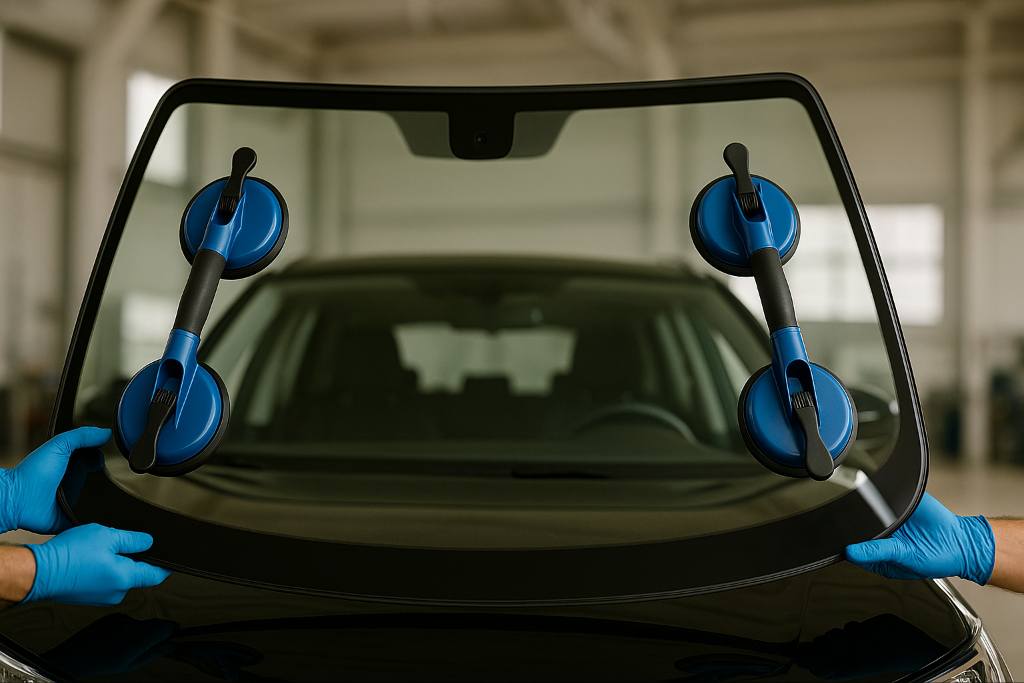What Is Automotive Laminated Glass and Why Is It Used?
Automotive laminated glass has become a standard feature in modern vehicles, valued for the way it combines safety, durability, and comfort. It is designed to improve protection for drivers and passengers while also creating a more comfortable driving experience. With its unique structure, laminated glass brings performance benefits that go far beyond what traditional glass can provide.
What Is Automotive Laminated Glass?
Automotive laminated glass consists of two or more layers of glass bonded together through a plastic interlayer such as polyvinyl butyral (PVB), ethylene-vinyl acetate (EVA), ionoplast, or thermoplastic polyurethane (TPU). The thin polymer layer acts like a strong, flexible adhesive, keeping glass fragments in place even when the surface cracks. That reliability delivers precise optical clarity, consistent protection, and strong structural performance.
How Automotive Laminated Glass Is Made
The manufacturing process of laminated glass combines precision with advanced technology. Sheets of glass are paired with a PVB or EVA interlayer and stacked together in preparation for bonding. This sandwich-like structure is then placed into an autoclave, where heat and pressure are applied simultaneously.
The heat softens the interlayer while the pressure removes any air pockets, ensuring a strong, uniform bond between the layers. Once the process is complete and the glass has cooled, each pane is trimmed and inspected for clarity, adhesion, and optical quality.
Why Automotive Laminated Glass Is Used in Vehicles
Manufacturers choose laminated glass for a range of benefits that enhance overall performance and protection in vehicles. Below are the main reasons behind its widespread use:
Safety Against Shattering
The interlayer holds broken glass fragments firmly in place, reducing hazard and ensuring that the integrity of the pane remains intact, even after impact.
Noise Reduction
The interlayer dampens vibrations, which lowers outside noise and creates a noticeably quieter and more refined cabin, whether the vehicle is in urban traffic or on the highway.
UV Protection
Certain interlayers, such as PVB, EVA, or TPU, block a substantial portion of harmful ultraviolet radiation. This helps preserve interior materials and protects passengers from UV exposure.
Structural Support
Laminated glass contributes to the structural integrity of the vehicle’s frame, supporting its performance during collisions or rollovers.
Security
Its layered construction increases resistance to forced entry or vandalism, raising security expectations in demanding applications.
Applications of Automotive Laminated Glass Beyond Windshields
Laminated glass is increasingly used beyond traditional windshields. It appears in several other vehicle components, supplying functional and aesthetic benefits in each case:
- Side and Rear Windows: Premium models and specialized vehicles increasingly use laminated windows to deliver quieter cabins, better UV filtering, and enhanced security.
- Sunroofs and Panoramic Roofs: Laminated glass is ideal for overhead glazing. Its rigidity delivers safety while allowing for tinting and insulation that enhances comfort in bright, hot conditions.
- Specialty and Luxury Vehicles: Armored autos, upscale limousines, and transit vehicles benefit from laminated panels in side, rear, or roof applications. The result is stellar protection, refined silence, and a sense of quality and premium.
Level Up Your Glass Lamination Process with Smartech
Laminated glass creates a safer, quieter, and more durable vehicle experience, from windshields to specialty glazing. That level of quality stems directly from the precision of manufacturing.
At Smartech, we provide Silicone Membranes for the Glass Lamination Industry. These membranes help apply uniform pressure, reduce defects, and support consistent bonding between glass and interlayers. Built for reliability and durability, they meet high production standards and enhance overall quality.
Contact us to explore how we can support your lamination processes and enhance both quality and efficiency with dependable silicone membranes tailored to your specific operational needs.

Looking for More Information?
Check out our Resources or Contact Us
